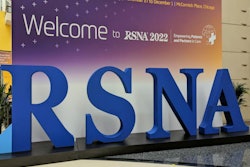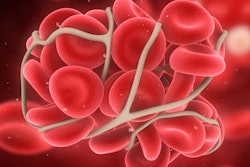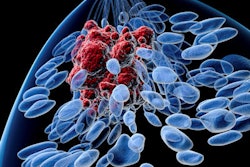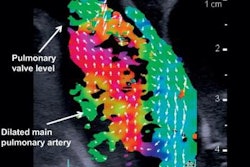
ORLANDO, FL - Quantitative ultrasound (QUS) shows promise as an emerging mode for clinical ultrasound, offering more specific data compared with conventional ultrasound exams, according to a lecture delivered Monday at the American Institute of Ultrasound in Medicine (AIUM) meeting.
Many conventional ultrasound studies already offer quantitative information, including distance, area, and volume measurements; Doppler-generated velocities and volume flow estimates; cardiac wall motion, strain, and ejection fraction data; and contrast and tissue stiffness analysis. But conventional ultrasound is subject to operator variability, said James Zagzebski, PhD, of the University of Wisconsin in Madison.
"QUS uses bulk acoustic properties and tissue microstructure features to increase ultrasound's sensitivity and specificity," he said during the AIUM's William J. Fry Memorial Lecture. "I believe that the current computational resources on ultrasound systems can be further exploited to provide us even more data than we already have."
Ultrasound imaging technology has continued to advance, with some new systems replacing conventional ultrasound's beamformer technology with high-capacity computational hardware and software, and synthesized virtual beams, Zagzebski said. QUS can capitalize on these computational advances. Compared with conventional ultrasound, QUS imaging offers more data related to tissue features -- such as attenuation and backscatter coefficients -- that increase the specificity of image findings and can lead to improvements in diagnostic ultrasound. QUS techniques include spectral-based parameterization, elastography, shear-wave imaging, and flow estimation.
"System independent backscatter coefficient and attenuation coefficient estimates can be made accurately using clinical scanners," he told session attendees. "There's evidence that QUS can provide valuable information to assess diffuse liver disease, characterize breast masses, and assess the effects of anesthesia."
QUS may be particularly helpful for breast imaging, according to Zagzebski.
"In vitro studies showed that QUS parameters, attenuation coefficient, and backscatter coefficient can give useful insight into the nature of breast tissue," he said. "And animal studies have shown that the use of QUS parameters such as effective scatter [can] differentiate benign fibroadenomas from malignant breast masses."
Other potential applications for QUS include evaluating changes in the cervix accompanying ripening and breast tumor response to treatment, tracking lymph node involvement in disease, monitoring radiofrequency and microwave ablation, and diagnosing eye and orbital disease, Zagzebski noted.
In any case, as the use of QUS continues, there's a need to set best practices, such as those established through the Quantitative Imaging Biomarkers Alliance (QIBA), he said.
"We need to establish good protocols for QUS, like those developed through the QIBA effort, so that everybody will be operating under the same standards," he concluded.




















